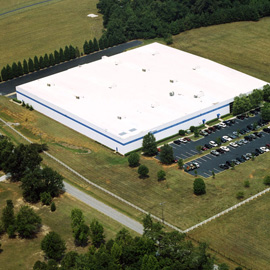Cast Stretch Film vs. Blown Stretch Film: What are the Differences?
Cast stretch film and blown stretch film are an excellent tool to secure pallets and protect goods. What exactly are the differences between the two?
Stretch Film, also frequently referred to as plastic film or stretch wrap, is a versatile plastic packaging tool made from linear low density polyethylene (LLDPE). Stretch film is used in pallet wrapping, bundling, and securing to provide enhanced protection. The process of stretch wrapping a product or a pallet of products helps to reduce damage and loss to your goods, increase product security, and reduce worker injury.
Cast Stretch Film vs. Blow Stretch Film
The two most commonly used types of stretch wrap films are cast stretch wrap and blown stretch wrap.
Cast Stretch Film:Also known as cast stretch wrap, plastic wrap, or pallet wrap, it is made using a cast extrusion process. During the cast extrusion process, the polymer iscontinuously pumped through a straight slot orifice (die). This hot sheet of plastic film is then chilled immediately after through contact with a cooled chill roll. Film thickness is determined by how fast the casting roll pulls the plastic away from the die.
Blown Stretch Film:Commonly known as blown stretch wrap, this plastic film is fabricatedby a process of continuously pumping the polymer through a circular orifice (die) and creating a tube. This tube is then filled with air. The volume of air contained within the tube stretches the tube, also called a bubble, to the desired width. The desired thickness is achieved depending on the rate at which the plastic is pulled away from the die.

Here is a chart to help highlight the main differences between cast stretch film and blown stretch film:
| Cast Stretch Wrap | Blown Stretch Wrap |
|---|---|
| Characteristics: Clear, Glossy, Better Gauge, Quiet, "Natural" Cling | Characteristics: Hazy, Dull, Tough,Impact Resistant,Noisy |
| Excellent load retaining capability | Superior load-holding capability |
| High film puncture and tear resistance | Very high levels of puncture and tear resistance |
| Single-sided or two-sided cling formulations | High cling levels |
| Thinner gauge films with significant performance advantages and cost savings available |

Common Stretch Film Industries: Bottling, Landscaping, Construction, Electronics, Automation, Food Industry, Paper Industry, Carpeting, Furniture Industry, Medical Industry, etc.







